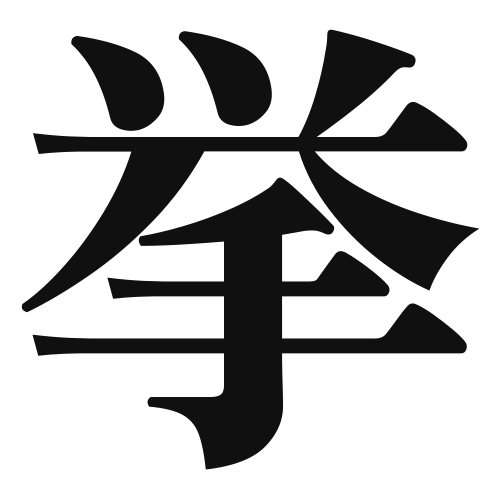1. Overview of Meaning
The kanji 挙 (kyo) generally means “to raise,” “to lift,” or “to hold up.” It is often used in contexts where something is being elevated or brought to attention.
2. Formation and Radical
Formation of the Kanji: The kanji 挙 is a compound character (会意文字) that combines the elements of “hand” (手) and “to gather” (擧). This reflects the action of using one’s hand to lift or raise something.
Radical: The radical for 挙 is 手 (meaning “hand”), which is commonly associated with actions involving the hands.
3. Examples of Usage
Common Words and Phrases: Some frequently used words that include 挙 are:
- 挙げる (ageru) – to raise, to lift, to mention
- 挙式 (gyoshiki) – wedding ceremony
Example Sentences in Daily Conversation:
- 彼は手を挙げて質問しました。
(Kare wa te o agete shitsumon shimashita.)
(He raised his hand to ask a question.) - 結婚式で彼らは誓いを挙げました。
(Kekkonshiki de karera wa chikai o agemashita.)
(They made their vows at the wedding ceremony.)
4. Synonyms and Antonyms
Similar Kanji: A kanji with a similar meaning is 持 (mochi), which means “to hold” or “to possess.” The difference lies in the action; 挙 emphasizes raising or lifting, while 持 focuses on holding something in place.
Antonyms: An antonym for 挙 could be 下げる (sageru), which means “to lower” or “to bring down.”
5. Cultural and Historical Background
Relation to Japanese Culture: The kanji 挙 is often associated with important events, such as ceremonies and celebrations, where raising or elevating something symbolizes honor and respect.
Proverbs and Idioms: One common expression is 挙げては下げる (agete wa sageru), which means “to raise and then lower,” often used to describe fluctuating situations or indecisiveness.
